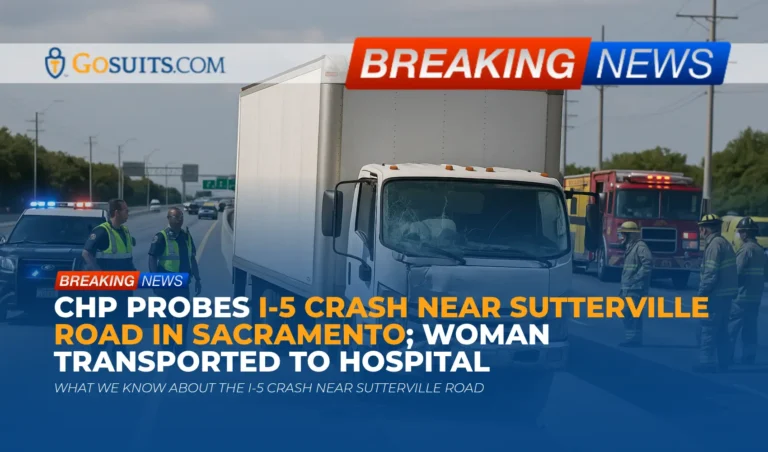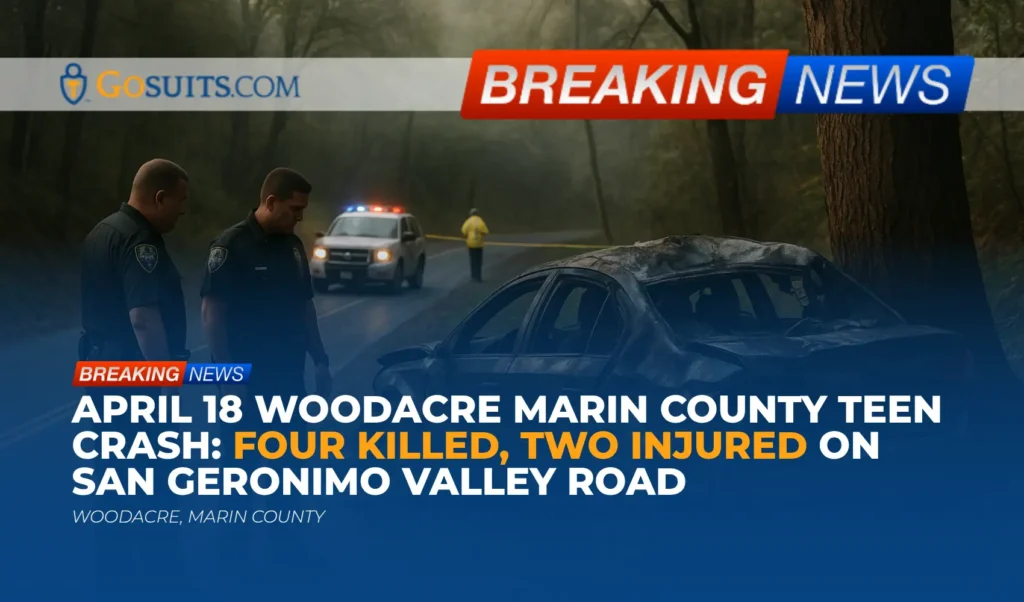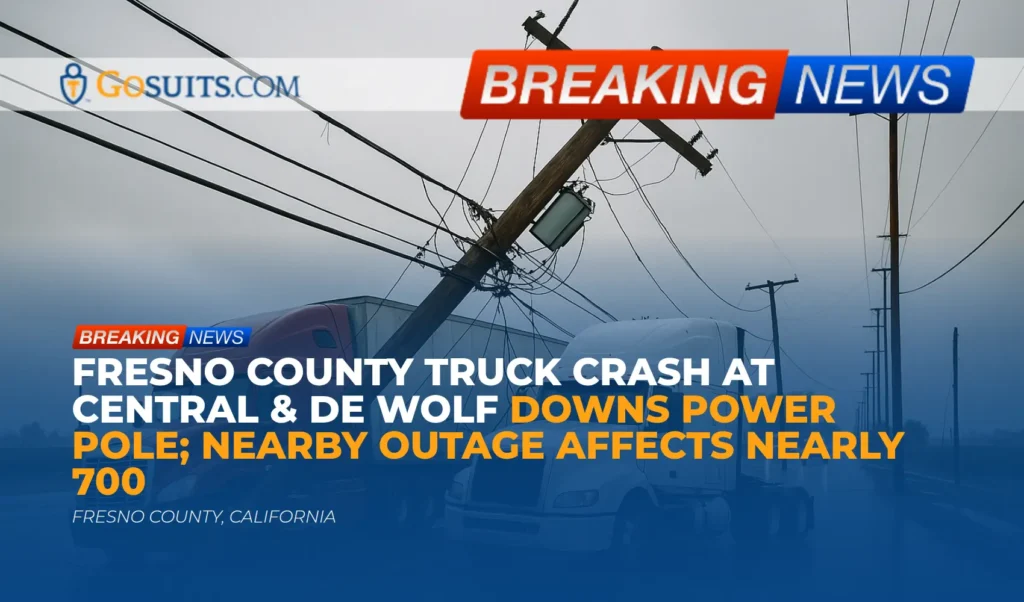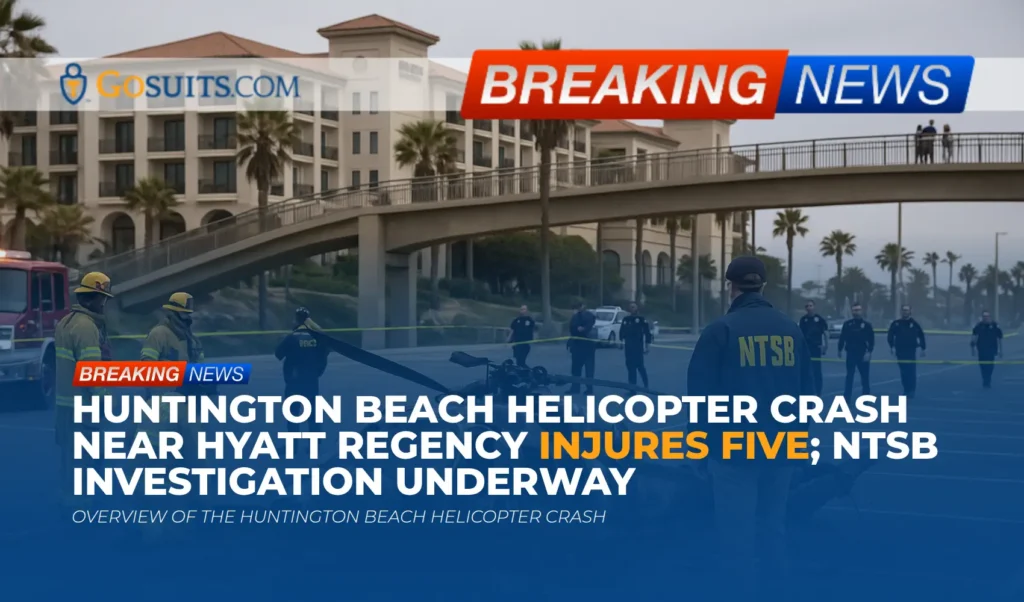- What we know about the I-5 crash near Sutterville Road
- Location and traffic context: I-5 through Sacramento’s Land Park area
- How freeway crash investigations typically proceed in California
- Immediate health and safety steps after a freeway collision
- How to obtain official records and documents
- California Highway Patrol collision report
- California DMV SR-1 accident reporting requirement
- Medical records from hospitals or clinics
- Coroner and autopsy information (if a fatality occurs)
- Comparative fault and why it matters
- Common layers of insurance coverage
- Key civil deadlines to know
- Working with insurance companies: common pitfalls
- Costs, medical billing, and potential liens
- Data snapshot: Traffic safety context in California and Sacramento
- Community and government resources
- Why timely action matters and what to do next
- Commentary from Gosuits Sacramento, CA Personal Injury Attorney
What we know about the I-5 crash near Sutterville Road
According to the California Highway Patrol, a two-vehicle collision occurred around 7:40 a.m. on northbound Interstate 5 just south of Sutterville Road in Sacramento’s Land Park neighborhood. Emergency medical personnel transported a woman to a nearby hospital for treatment. As of now, the circumstances leading up to the crash remain under investigation, and no additional details have been released by authorities. This summary reflects information publicly attributed to the California Highway Patrol. For official updates, consult the CHP directly at the California Highway Patrol website.
Location and traffic context: I-5 through Sacramento’s Land Park area
The crash location is on a busy stretch of I-5 running through Sacramento. Morning commuting hours are typically high-volume, and traffic merging near interchanges like Sutterville Road can create sudden slowdowns. On urban interstates, common crash scenarios include rear-end impacts during stop-and-go traffic, unsafe lane changes, and sideswipes when drivers are distracted or misjudge speed and distance. None of these factors have been confirmed in this incident; they are shared to help readers understand typical freeway risks in the region.
Real-time traffic tools like Caltrans QuickMap can help the public confirm closures, hazards, and congestion following a crash. Caltrans maintains statewide road condition information at QuickMap, which can be useful for planning alternate routes and staying clear of emergency responders on-scene.
How freeway crash investigations typically proceed in California
On state highways, the California Highway Patrol usually has primary jurisdiction. Responding officers secure the scene, arrange medical aid, and document physical evidence. The investigative process often includes:
- Scene documentation by officers, including diagrams, measurements, road and weather conditions, skid or yaw marks, debris fields, and vehicle damage patterns.
- Witness statements from drivers, passengers, and bystanders, which can change as memories fade. Written statements or recorded accounts are more reliable than recollections months later.
- Vehicle inspections for mechanical issues, safety systems, and occupant protection features. In some cases, data from Event Data Recorders (EDRs) may be preserved. The National Highway Traffic Safety Administration provides general information about EDRs here: NHTSA Event Data Recorder.
- Collision report completion and filing. Injured parties, their families, and insurers typically request the official report once available.
Investigations can take days or weeks depending on the complexity of the crash, the need for follow-up interviews, and whether specialized reconstruction is required. It is common for preliminary reports to note “cause under investigation” until facts are verified.
Immediate health and safety steps after a freeway collision
Freeway crashes happen fast and can be disorienting. After immediate dangers are controlled, the first priority is medical care. Even if injuries seem minor, getting evaluated promptly can catch conditions that are not obvious at the scene. Early documentation also ties symptoms and diagnoses to the collision, which is often important later.
As a general safety checklist following a crash:
- Seek medical care promptly. Follow discharge instructions and attend follow-up appointments.
- Document symptoms as they appear, including pain levels, mobility limitations, headaches, dizziness, and sleep disturbances.
- Keep records of prescriptions, imaging, referrals, and time missed from work or school.
- Avoid recorded statements to any insurance company until after speaking with a qualified attorney. What is said to an insurer may be used to challenge or minimize a claim later.
How to obtain official records and documents
Several official documents often become important after a freeway crash. In California, these include the CHP collision report, the DMV SR-1 report when applicable, medical records, and in tragedies involving fatalities, coroner records.
California Highway Patrol collision report
The CHP collision report is the foundational document summarizing the responding officer’s findings. It typically includes involved parties, vehicles, insurance details, witness statements, and a narrative with a preliminary determination of factors. To request a copy:
- Use the CHP 190 form and follow the instructions provided by CHP. See: CHP Collision Report (CHP 190).
- Identify the correct Area office handling the crash. CHP offers a locator to find Area offices statewide at California Highway Patrol (navigate to “Find an Office”).
- Provide key details: date and time of collision, exact location, parties involved if known, and the report number if you have it.
Only authorized parties can obtain the full report. If a minor is involved, a parent or legal guardian may usually request it. Processing times vary by office.
California DMV SR-1 accident reporting requirement
California requires that drivers file an SR-1 accident report with the DMV within 10 days if anyone is injured or killed, or if property damage exceeds a statutory threshold. The DMV explains this requirement here: DMV Accident Reporting. Filing the SR-1 is separate from the police report and is mandatory even when law enforcement responds. The DMV page also explains what information you need to file and how the report is used.
Medical records from hospitals or clinics
Individuals are entitled to access their medical records under federal law. The U.S. Department of Health and Human Services provides guidance on patient access rights under HIPAA at HHS: Your Rights Under HIPAA. If treatment occurred at a Sacramento hospital, contact the provider’s Health Information Management or medical records department for instructions on requesting copies of records and imaging. For serious trauma care in the Sacramento area, UC Davis Health is a regional Level I trauma center; information about trauma services is available at UC Davis Health Trauma Program. This link is for general background only and does not indicate where any specific patient was treated.
Coroner and autopsy information (if a fatality occurs)
This crash has been reported as an injury incident. In cases involving a fatality in Sacramento County, the Sacramento County Coroner’s Office oversees death investigations and can provide information to next of kin about autopsy reports, identification, and release of remains. See: Sacramento County Coroner’s Office. Certain records may be confidential or subject to timing requirements.
Preserving evidence after a crash
Evidence degrades quickly after a freeway crash. Physical marks on pavement fade, vehicles get repaired or totaled, and digital data can be overwritten. Steps that can help preserve important information include:
- Photographs and video: Save smartphone photos and videos from the scene, vehicle damage, and injuries. Back them up to avoid loss. If you later return to the area, additional photos of roadway features, signage, and lines of sight can help contextualize the scene.
- Vehicle data and inspections: Ask your insurer not to dispose of the vehicle until an inspection can occur. Some vehicles store limited EDR data helpful to understanding pre-impact speed and braking. NHTSA provides background on EDRs: NHTSA Event Data Recorder.
- Witnesses: Collect names and contact information. Independent witnesses help corroborate events and can counter later disputes.
- Public records: Consider a timely request for 911 audio or dispatch logs and traffic camera footage where available. Guidance on making public records requests in California is provided by the Attorney General’s office at Access to Public Records. Availability varies by agency and retention schedules can be short.
- Personal notes: Write down your recollection of the crash as soon as possible, including traffic conditions, weather, speed, lane position, and any statements made by other drivers at the scene.

Understanding liability and insurance in California
While each case turns on specific facts, injury claims often involve questions about fault, available insurance coverage, and how the law assigns responsibility among multiple parties. The following are general concepts for educational purposes.
Comparative fault and why it matters
California uses a comparative fault system, meaning responsibility and damages can be divided among those who contributed to the crash. The Judicial Council’s civil jury instructions include guidance on comparative fault, which courts and juries may consider when evaluating evidence. For background on civil jury instructions in California, see the California Courts’ resources on jury instructions: California Courts: Jury Instructions.
In practical terms, even if one driver largely caused the crash, disputes can arise about whether another driver could have avoided the collision, how fast each was traveling, or whether following distance was adequate in congestion. Early evidence preservation helps clarify these questions.
Common layers of insurance coverage
California requires drivers to maintain financial responsibility, typically through auto liability insurance. The DMV outlines minimum financial responsibility requirements at DMV Insurance Requirements. Beyond minimums, several coverage types may be implicated in an injury claim:
- Liability coverage of an at-fault driver for bodily injury and property damage.
- Uninsured/Underinsured Motorist (UM/UIM) coverage on an injured person’s policy, which can apply if the at-fault driver has no insurance or insufficient limits.
- Medical Payments (MedPay) coverage, which can help with immediate medical expenses regardless of fault, depending on the policy.
- Employer or commercial policies if a driver was operating a work vehicle or driving in the course and scope of employment.
Policy language, exclusions, and priority among multiple insurers can be complicated. Before speaking with any insurance company, consider consulting an attorney so you understand rights and obligations; statements to insurers can be used later to question or minimize your claim.
Key civil deadlines to know
California has deadlines for bringing civil actions. For personal injury related to a motor vehicle crash, the statute of limitations is generally two years from the date of injury, per California Code of Civil Procedure section 335.1, available at the Legislature’s site: CCP § 335.1. Different, shorter deadlines can apply when claims involve a public entity, which typically requires a government claim to be presented within six months before a lawsuit can be filed. Because deadlines can vary and exceptions may apply, consider speaking with a qualified attorney promptly to understand which timelines affect a particular situation.
Working with insurance companies: common pitfalls
Insurance adjusters may contact people soon after a crash. While they can facilitate repairs and handle aspects of claims, early communications can also shape the record in ways that are hard to unwind later. Common pitfalls include:
- Recorded statements: Seemingly casual descriptions can be interpreted narrowly. Avoid recorded statements until you have consulted an attorney.
- Premature settlements: Early offers may come before the full scope of injury, treatment needs, and time off work are known.
- Medical authorizations: Broad releases can give access to unrelated health history. Narrow, tailored records requests are safer and more appropriate.
- Social media: Posts can be cited to challenge injury claims. It is prudent to limit public sharing about health, activities, or the crash.
Contacting an attorney first can help ensure communications are accurate and that important rights are protected before engaging with insurers.
Costs, medical billing, and potential liens
After a crash, medical bills may be paid through health insurance, MedPay, or other sources. Providers or insurers sometimes assert liens, meaning they seek reimbursement from any eventual recovery. California law recognizes certain medical lien rights. For example, the state’s Hospital Lien Act is codified in the California Civil Code (see Civil Code sections beginning at 3045.1 at the Legislature’s website: California Codes at leginfo.legislature.ca.gov). Public health programs may also have reimbursement rights. The details can be technical and timing-sensitive; understanding them early helps avoid surprises when treatment bills arrive.
Data snapshot: Traffic safety context in California and Sacramento
Understanding the broader safety context can help place a single incident in perspective. The California Office of Traffic Safety publishes statewide numbers and county-level collision rankings drawn from official crash data. The OTS “Quick Stats” page summarizes key statewide trends, including fatalities and major causes, and is available at OTS Quick Stats. County and city-level collision rankings by crash type and factor are published here: OTS Collision Ranking Results.
While specific figures vary year to year, several consistent themes emerge in urban freeway environments:
- Speed and sudden slowdowns contribute to rear-end and multi-vehicle crashes during commute periods.
- Driver inattention is a persistent factor, especially with mobile device use.
- Lane-change conflicts near ramps and merges increase crash risk when drivers misjudge gaps or fail to check blind spots.
Nationally, NHTSA’s reports emphasize restraint use and safe speeds as key to reducing injuries and fatalities. For broad safety research and resources, see NHTSA.
Community and government resources
These government and academic resources may help with information, records, or safety planning following a Sacramento freeway collision:
- California Highway Patrol: Collision report requests and Area office contacts. CHP Collision Report and Find an Office.
- California DMV: SR-1 accident reporting and insurance requirements. DMV Accident Reporting and Insurance Requirements.
- Caltrans QuickMap: Real-time road and incident information. QuickMap.
- HHS HIPAA guidance: How to obtain your medical records. Your Rights Under HIPAA.
- Sacramento County Coroner (for fatalities): Family assistance and records information. Sacramento County Coroner’s Office.
- UC Davis Health: Trauma program overview and injury prevention resources. UC Davis Health Trauma Program.
- California Attorney General: Making Public Records Act requests. Access to Public Records.

Why timely action matters and what to do next
Taking thoughtful, timely steps can protect health, preserve evidence, and keep options open. Here is a practical outline of actions and why they matter:
- Prioritize medical evaluation: Early diagnosis supports healing and creates a clear link between the crash and injuries. Delays can complicate treatment decisions and raise questions about causation.
- Preserve evidence immediately: Photos, witness contacts, and vehicle data can disappear quickly. Capturing this information now can make the difference later when facts are disputed.
- Request official records: The CHP collision report, medical records, and, if applicable, public records requests or coroner documents provide the objective backbone for any claim or insurance process.
- Organize documentation: Keep a single file with medical bills, receipts, time off work, and communications. Organized records help avoid missed items and reduce delays.
- Consult an attorney before speaking with insurers: Insurance communications affect outcomes. Getting a free consultation early helps clarify rights, obligations, and risks. What is said to an adjuster can be used later.
- Know the timelines: Civil deadlines and claims procedures are strict. Starting early allows time to investigate, obtain records, and evaluate medical progress before key dates approach.
Acting promptly is about clarity and care: ensuring health needs are addressed, facts are preserved, and decisions are made with full information rather than under time pressure.
Commentary from Gosuits Sacramento, CA Personal Injury Attorney
First and most importantly, our thoughts are with the person injured in this I-5 collision and with everyone affected. Morning freeway crashes are frightening, and recovery can be as much about navigating the process as healing physically. This article is intended for educational purposes and general information to help the community understand what typically follows an incident like this.
From a civil injury perspective, freeway collisions often turn on seemingly small details: the timing of a lane change, sudden braking in congestion, or a momentary distraction. When facts are still developing, it is wise not to jump to conclusions about fault. Independent evidence such as dashcam video, physical markings on the roadway, and the CHP report can provide clarity. Preserving that information as early as possible tends to lead to a clearer, fairer outcome for everyone involved.
Insurance companies and large corporate stakeholders manage claims every day. They understand how to frame early statements, medical timelines, and property damage in ways that may reduce what they ultimately pay. People unfamiliar with these processes can be at a disadvantage, especially when dealing with recorded statements, broad medical authorizations, or quick settlement offers that arrive before the full scope of injury is known. Taking time to understand rights and obligations, and speaking with a seasoned and skilled attorney before engaging with insurers, helps level the playing field and reduces the risk of avoidable missteps.
Free consultations matter because they allow individuals to get grounded in the process without pressure or guesswork. A conversation can clarify insurance coverages that may apply, help prioritize which records to request first, and outline immediate steps that support both recovery and documentation. Even when someone ultimately chooses to handle a claim on their own, that early guidance can prevent costly mistakes and preserve important options.






